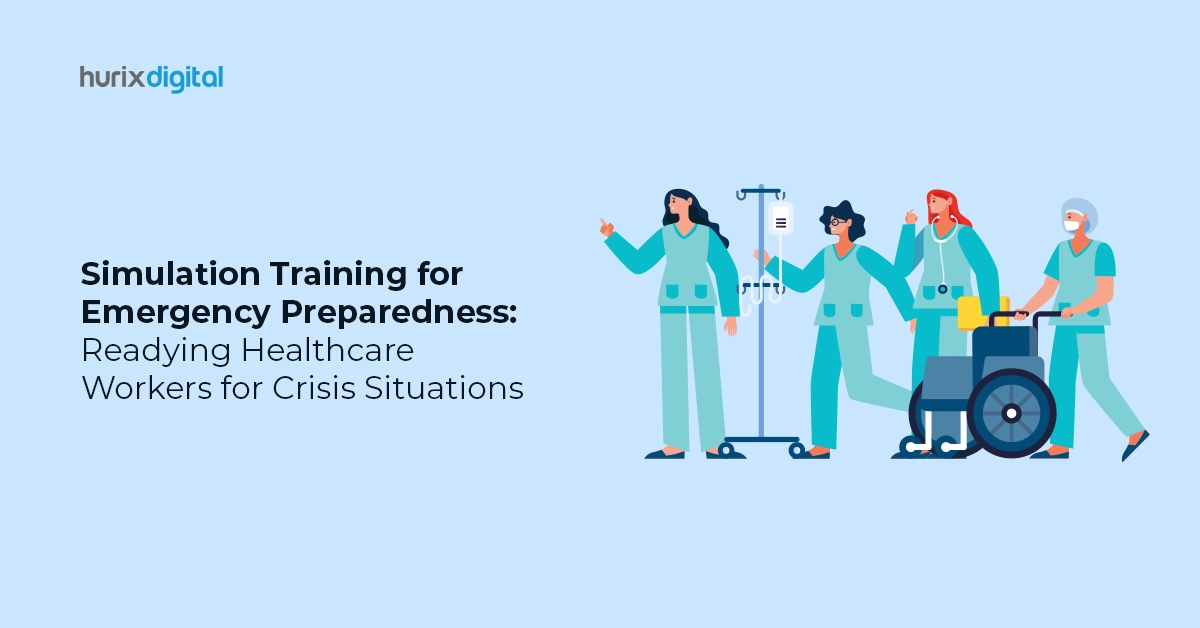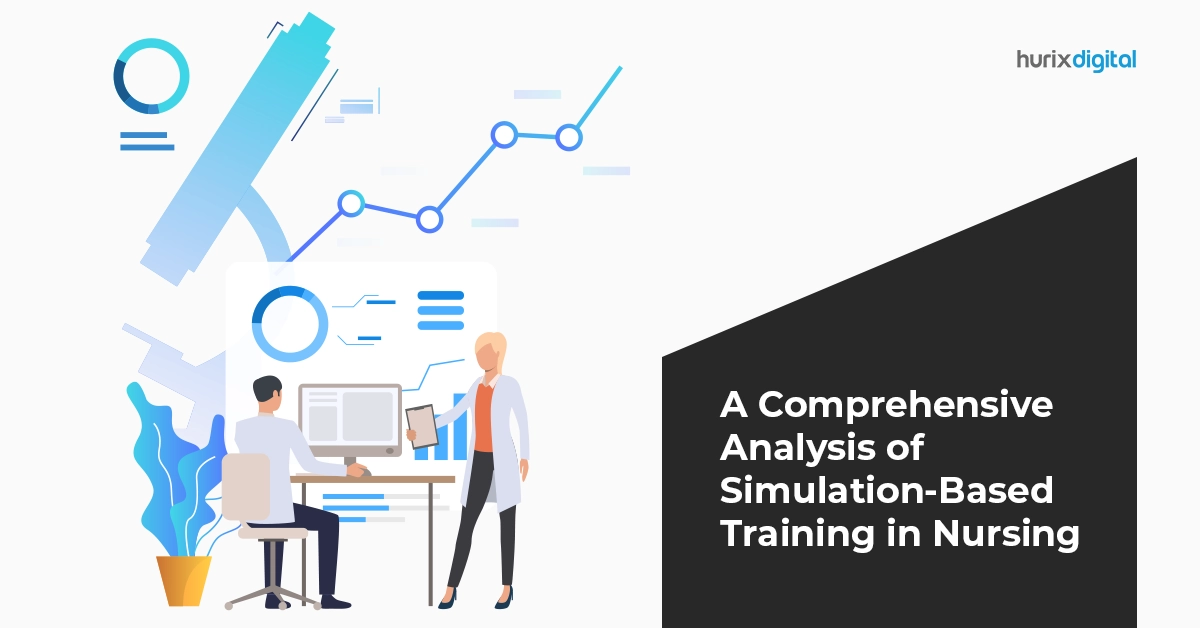
Simulation Training for Emergency Preparedness: Readying Healthcare Workers for Crisis Situations
Summary
Learn how simulation training can prepare healthcare workers for emergencies. This blog discusses the effectiveness of simulations in enhancing crisis readiness.
In the healthcare industry, simulation training is a crucial tool for ensuring that healthcare workers are equipped to handle emergencies such as mass accidents, natural disasters, infectious disease outbreaks, etc., effectively.
Let’s further understand the role of simulation learning in medical education for dealing with emergencies.
Table of Contents:
- How Simulation Training Strengthened Healthcare Systems Amidst the Pandemic?
- The Importance of World Health Organization’s Emergency Simulation Exercises
- Types of Simulation Training Methods for Crisis Situations
- In-situ Certificate-Based Simulation Training for Healthcare Workers
- Implementing Virtual and Augmented Reality for Simulation Training
- Conclusion
How Simulation Training Strengthened Healthcare Systems Amidst the Pandemic?
The pandemic has undoubtedly emerged as one of the most frightening global healthcare crises in recent history. In the initial months of the crisis, healthcare systems worldwide struggled to contain the spread of the virus and provide adequate care to those affected.
One of the key hurdles encountered was the lack of simulation training and preparedness among healthcare professionals at the frontline of the pandemic. This lack of preparedness affected the containment efforts and heightened the risk of exposure and transmission within healthcare settings.
But as time went on during the pandemic, people started working together more to fix these problems and give healthcare workers what they needed to deal with the crisis better.
They did this by setting up specific training programs and making sure health authorities and frontline workers were on the same page. This made a big difference in how well we could deal with the pandemic. It became increasingly evident that emergency preparedness training was helping us control the pandemic better.
Also Read: Designing Effective Application Training Programs for Healthcare Professionals
The Importance of World Health Organization’s Emergency Simulation Exercises
The World Health Organization (WHO) has implemented comprehensive Emergency Simulation Exercises to corroborate preparedness and efficacy in response to health crises. These exercises have various formats, ranging from discussion-based tabletop exercises to operations-based drills.
- Discussion-based tabletop exercises focus on strategic planning and decision-making. These exercises involve stakeholders in hypothetical scenarios to evaluate response protocols and identify areas for improvement.
- Operations-based exercises, on the other hand, involve the practical implementation of response procedures. This includes drills, which simulate certain aspects of emergency response, and functional exercises that test coordination among different agencies and departments. It may also include field or full-scaled exercises that replicate real-world conditions to assess the entire response chain.
Aim of Simulation Exercises and Training
According to the World Health Organization, simulation training exercises must aim to fulfill the following 9 goals:
- Evaluate planning assumptions, procedures, and operational guidelines.
- Test interoperability between plans and procedures.
- Identify planning weaknesses and resource gaps.
- Improve coordination and collaboration.
- Clarify roles and responsibilities.
- Practice and confirm the chain of command.
- Build knowledge and skills for emergency response.
- Introduce staff to new functions and equipment.
- Establish recognition and trust in emergency management processes.
Types of Simulation Training Methods for Crisis Situations
In addressing crisis preparedness, healthcare professionals utilize a variety of simulation training methodologies, as set forth by the Department of Health and Human Services. These methodologies are mainly of three types:
1. Simulation Centers
Imagine a place where healthcare workers can explore realistic scenarios without worrying about real-life consequences. Simulation centers offer a controlled environment where healthcare workers can improve their decision-making skills without fearing the repercussions.
Simulation centers are vital platforms for medical education, including surgery training. They enable individuals to familiarize themselves with high-pressure scenarios in a risk-free setting.
2. Classrooms and Skills Labs
Sometimes, all we need is a good old-fashioned classroom or skills lab to brush up on our knowledge and techniques.
Here, healthcare workers can learn the theory behind emergency response and practice specific tasks in a safe and supportive setting. This structured approach to healthcare education provides a foundational understanding of emergency protocols.
3. In-situ Simulations
In contrast to dedicated simulation centers, in-situ simulations take place within the actual healthcare environment. This mode of simulation-based learning involves replicating emergency scenarios directly within hospital wards, clinics, or other care settings.
This approach helps healthcare workers gain a deeper understanding of the logistical challenges they might face during a crisis.
In-situ Certificate-Based Simulation Training for Healthcare Workers
Alongside big simulation sessions, hospitals are realizing the power of in-situ certificate-based simulation training. This means practicing emergency scenarios right where healthcare workers do their daily jobs.
Why is this important? It lets healthcare workers get hands-on experience in their workplace. They can learn how to deal with emergencies using the equipment and setup they’re used to, which will make them better prepared for the real situation.
The certificate-based aspect of this training provides formal recognition of healthcare workers’ participation. By earning certificates upon completion of simulation training, healthcare professionals gain validation of their competencies while also demonstrating their commitment to continuous learning and preparedness.
Implementing Virtual and Augmented Reality for Simulation Training
Over the years, technology has stepped up its game when it comes to training healthcare workers. Virtual Reality (VR) and Augmented Reality (AR) are two such technologies that are continuously used for training healthcare professionals.
This trend is very evident in the report by Research and Markets. This report suggests that the AR-VR market in healthcare is expected to grow at a CAGR of 22.5% from 2023 to 2027.
In terms of crisis training, VR and AR offer various benefits. VR allows healthcare professionals to simulate a wide range of emergencies, such as mass casualty incidents and infectious disease outbreaks. It allows workers to practice essential emergency procedures without risking patient safety.
Also Read: How to Hire the Best Healthcare Instructional Designer for Your Training Needs?
Conclusion
Healthcare simulation training plays a crucial role in preparing healthcare professionals for the challenges they may face during crises. It improves their decision-making skills and gives them the confidence to effectively manage the emergency.
If you are looking for robust higher education solutions, then Hurix Digital might help you. We provide comprehensive courseware development, editorial, and assessment services. We also offer staffing solutions to help you hire the best subject matter experts for your next project.
Contact us today to learn more about our services!

Senior Vice President
A Business Development professional with >20 years of experience with strong capability to sell new solutions and develop new markets from scratch. New Market Entry Specialist with experience of working in two of the largest emerging markets – China & India. Also covered other key markets in APAC, US, EU & ME. Exceptional experience of conceptualizing, ideating and selling new learning technologies like VR AR, etc. across multiple industry verticals.







